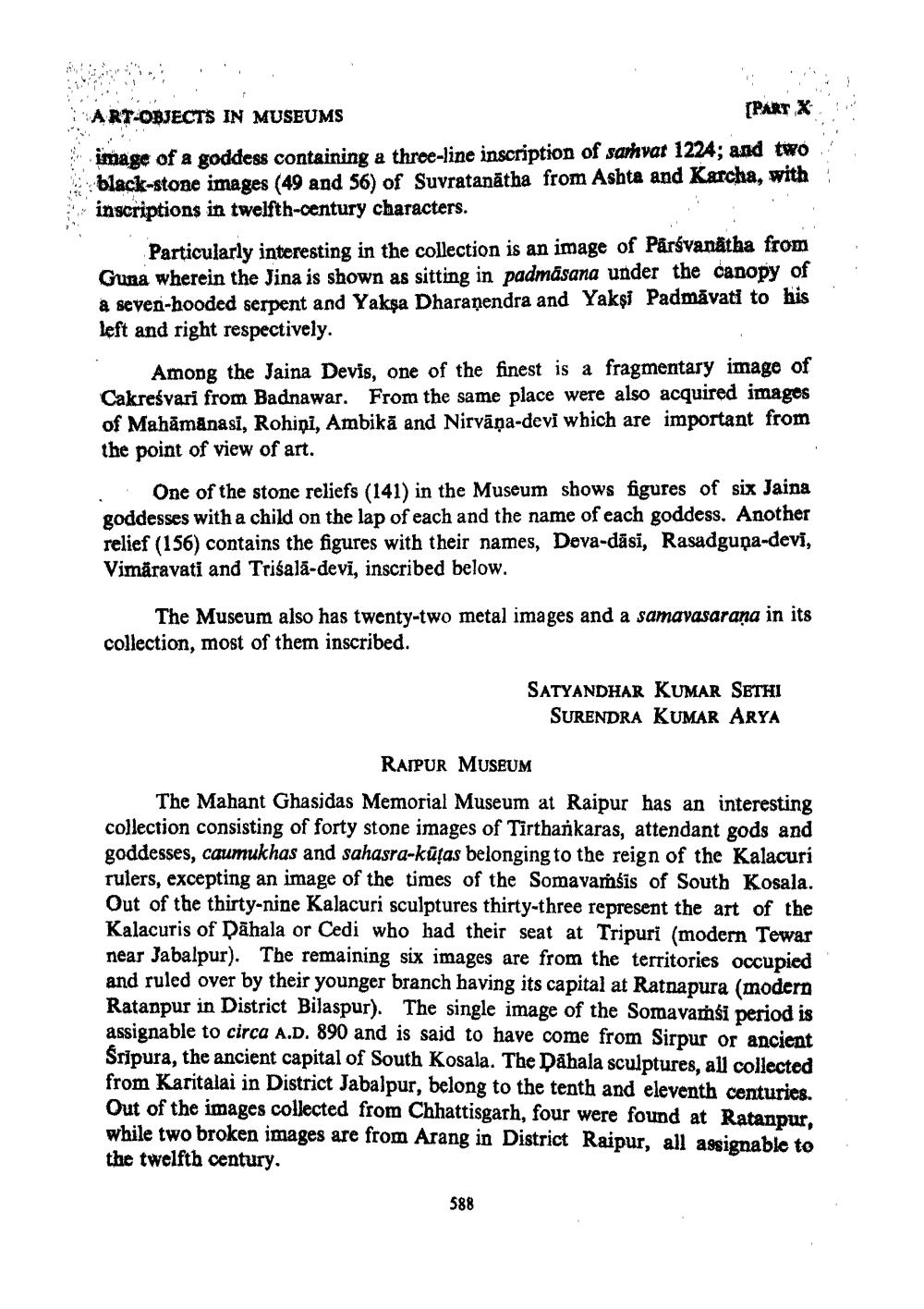________________
ART-OBJECTS IN MUSEUMS
[PART X image of a goddess containing a three-line inscription of sarhvar 1224; and two black-stone images (49 and 56) of Suvratanātha from Ashta and Karcha, with inscriptions in twelfth-century characters.
Particularly interesting in the collection is an image of Pärsvanätha from Guna wherein the Jina is shown as sitting in padmāsana under the canopy of a seven-hooded serpent and Yaksa Dharanendra and Yaksi Padmavati to his left and right respectively.
Among the Jaina Devis, one of the finest is a fragmentary image of Cakreśvari from Badnawar. From the same place were also acquired images of Mahāmānasi, Rohini, Ambikā and Nirvāņa-devi which are important from the point of view of art.
One of the stone reliefs (141) in the Museum shows figures of six Jaina goddesses with a child on the lap of each and the name of each goddess. Another relief (156) contains the figures with their names, Deva-dāsi, Rasadgupa-devi, Vimäravati and Trisalā-devī, inscribed below.
The Museum also has twenty-two metal images and a samavasarana in its collection, most of them inscribed.
SATYANDHAR KUMAR SETHI
SURENDRA KUMAR ARYA
RAIPUR MUSEUM
The Mahant Ghasidas Memorial Museum at Raipur has an interesting collection consisting of forty stone images of Tirtharikaras, attendant gods and goddesses, caumukhas and sahasra-küțas belonging to the reign of the Kalacuri rulers, excepting an image of the times of the Somavamšīs of South Kosala. Out of the thirty-nine Kalacuri sculptures thirty-three represent the art of the Kalacuris of Dāhala or Cedi who had their seat at Tripuri (modern Tewar near Jabalpur). The remaining six images are from the territories occupied and ruled over by their younger branch having its capital at Ratnapura (modern Ratanpur in District Bilaspur). The single image of the Somavamsi period is assignable to circa A.D. 890 and is said to have come from Sirpur or ancient Sripura, the ancient capital of South Kosala. The Dahala sculptures, all collected from Karitalai in District Jabalpur, belong to the tenth and eleventh centuries. Out of the images collected from Chhattisgarh, four were found at Ratanpur, while two broken images are from Arang in District Raipur, all assignable to the twelfth century.
588




